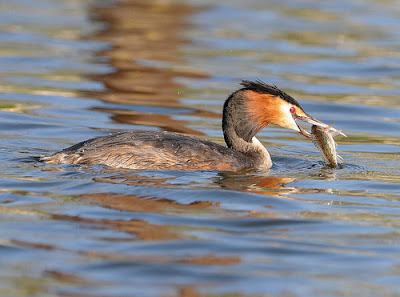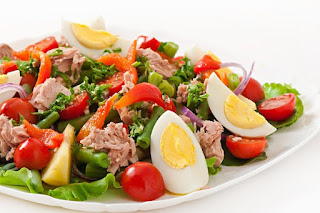from
Behind the French Menu
by
Bryan G. Newman
behindthefrenchmenu@gmail.com
Zander
Sandre, Perche-brochet or Doré Noir – Zander in the USA and Pike-perch in the UK. (For this post, I will use the name Zander as this fish is rarely on UK restaurant menus). Zander is a freshwater fish that is sometimes mistaken for Pike. Despite the occasional case of mistaken identity Zander is very much a part of the perch fish family and has a different taste and texture to Pike. N.B. Pike, the fish, is called Brochet in French.
Zander has light, firm, but tender meat with few bones and a delicate taste. In France and much of Western and Europe, Zander will be on fish restaurant menus. This is the time to try this tasty fish that may not be on many menus at home. Zander is found in nearly all the rivers and lakes in France and is much sought after by anglers. Wild fish may be caught weighing over six kgs (13.2 lbs) or more with a few reaching three times that weight. On French menus, the chef will note if the fish was caught in the wild, otherwise, they will have come from freshwater fish farms. Zander from farms will weigh from 700 grams (1.5 lbs) to 3 kilos (6.6 lbs).
This is an over 10 kilo (22lb) Zander caught in a lake.
The fish was returned to be caught again another day,
Zander will be served grilled, fried or baked, and since even farmed fish are also quite large they are all served as filets. Zander will also be part of many freshwater fish soups and stews. In France Zander also find their way into quenelles, fish patties made with 50% fish and 50% bread and breadcrumbs.
Zander on French menus:
Dos de Sandre Au Beurre Blanc Nantais - A thick cut of Zander served with a Beurre Blanc Nantaise Sauce.
Pavé de Sandre du Lac aux Asperges
A thick cut of zander from the lake served with asparagus.
Photograph courtesy of Daniel Ebneter
Filet de Sandre aux Salicornes, Beurre Blanc – A filet of zander prepared with young salicornia and served with a Beurre Blanc Sauce. Salicornia or samphire, also called in French Perce-pierre or Criste-marine and often mistakenly described as an edible seaweed. Salicornia grows in salt marshes and along the coast, not in the sea. Only young salicornia plants are used, and they are gathered from April through July; they will be used in salads, sauces, soups, and they may also be pickled and used as a condiment. Their shape gives them another name, the asparagus of the sea. However, that description refers to their look, not their taste.
Salicornia
Sandre Sauvage, Noix de Saint Jacques et Gambas - Wild Zander, not from a fish farm, the word sauvage means wild. Here, the fish is served together with the meat of the King Scallop and large shrimps. Wild fish are considered tastier as zander, like many other fish, are what they eat. I have enjoyed the Zander that comes from fish farms; nevertheless, wild Zander has a stronger taste and a different texture.
Zander, Cauliflower, Anchovies and Capers.
Sandre, Chou-fleur, Anchois, Capres
Filet De Sandre, Sauce Matelote, Nouillettes À l'Alsacienne - A filet of zander served with a Matelote Sauce and Alsatian type noodles. Alsatian noodles are, in the Alsace, called Spâtzlé or Spaetzlé and look something like overweight bumpy noodles; they will be served as a garnish instead of potatoes, pasta or rice. Sauce Matelote includes red wine, butter, flour, shallots, black pepper, fish stock and often button mushrooms. N.B. On a menu with an English translation there is sometimes confusion with a freshwater fish stew called a Matelote and Sauce Matelote. Read the menu carefully!
Alsatian Spâtzlé
FiIlet De Sandre Poêlé, Beurre Rouge, Nouilles Fines – Filet of Zander lightly fried and served with a Beurre Rouge Sauce, and served with thin egg noodles. (Buerre Rouge Sauce is a thick sauce made with butter, red wine and shallots).
Zander with tomatoes and button mushrooms.
Quenelles de Sandre et Médaillons de Homard Européen, Sauce Homardine – Quennels of Zander served with oval or round cuts of the European two-clawed lobster all served with a Homardine Sauce. Quenelles are dumplings made with the fish, breadcrumbs and egg used for binding and Sauce Homardin translates as a lobster sauce. The chef will use lobster leftovers including the shell; however, for the color, many chefs also add a Béchamel Sauce flavoured with shellfish, shellfish shells and tomatoes.
Quenelles were originally created for Pike; some may be large and considered a main course while others may be smaller and served as side dish.
Quenelles were originally created for Pike; some may be large and considered a main course while others may be smaller and served as side dish.
Quenelles
Zander (Pike –Perch) were brought into the UK as another fish for amateur fishermen and women in the early 20th century. Despite that, in the UK they are now considered a threat to native species as they swim everywhere and eat everything.
This Great Crested Grebe also likes Zander.
Sandre – Zander in the language of France’s neighbors:
(Catalan – lucioperca), (Dutch – snoekbaars), (German –zander), (Italian- sandra, lucioperca), (Spanish - lucioperca).
Connected Posts:
Behind the French Menu
by
Bryan G. Newman
behindthefrenchmenu@gmail.com
.
Copyright 2010, 2016.















